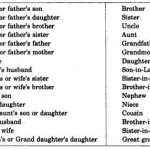| • In India it developed in the Pleistocene period or the Ice Age.b.
• The earliest traces of human existence in India go back to 500,000 BC.
• The Paleolithic sites are spread in practically all parts of India except the alluvial plains of Indus and Ganga.
• The people of this age were food gathering people who lived on hunting and gathering wild fruits and vegetables.
• Man during this period used tools of unpolished, undressed rough stones and lived in cave and rock shelters.
They had no knowledge of agriculture, fire or pottery of any material.
• They mainly used hand axes, cleavers, choppers, blades, scrapers and burin. Their tools were made of hard rock
called ‘quartzite’. Hence Paleolithic men are also called ‘Quartzite Men’.
• Homo sapiens first appeared in the last of this phase.
• It has been pointed out that Paleolithic men belonged to the Negrito race.
• The Paleolithic Age in India has been divided into three phases according to the nature of stone tools used by the
people and also according to the nature of change in the climate – Early or lower Paleolithic, Middle Paleolithic
and Upper Paleolithic.
• The Early Paleolithic Age covers the greater part of the Ice Age. Its characteristic tools are hand axes, cleavers
and choppers. Such tools have been found in Soan and Sohan river valley (now in Pakistan) and in the Belan
Valley in the Mirzapur district of UP In this period climate became less humid.
• Middle Paleolithic Phase is characterized by the use of stone tools made of flakes mainly scrapers, borers and
blade like tools. The sites are found in the valleys of Soan, Narmada and Tungabhadra rivers.
• In the Upper Paleolithic Phase, the climate became warm and less humid. This stage is marked by burins and
scrapers. Such tools have been found in APKarnataka, Maharashtra, Bhopal and Chhota Nagpur plateau. |






